Bid Optimization For Your Google Ads
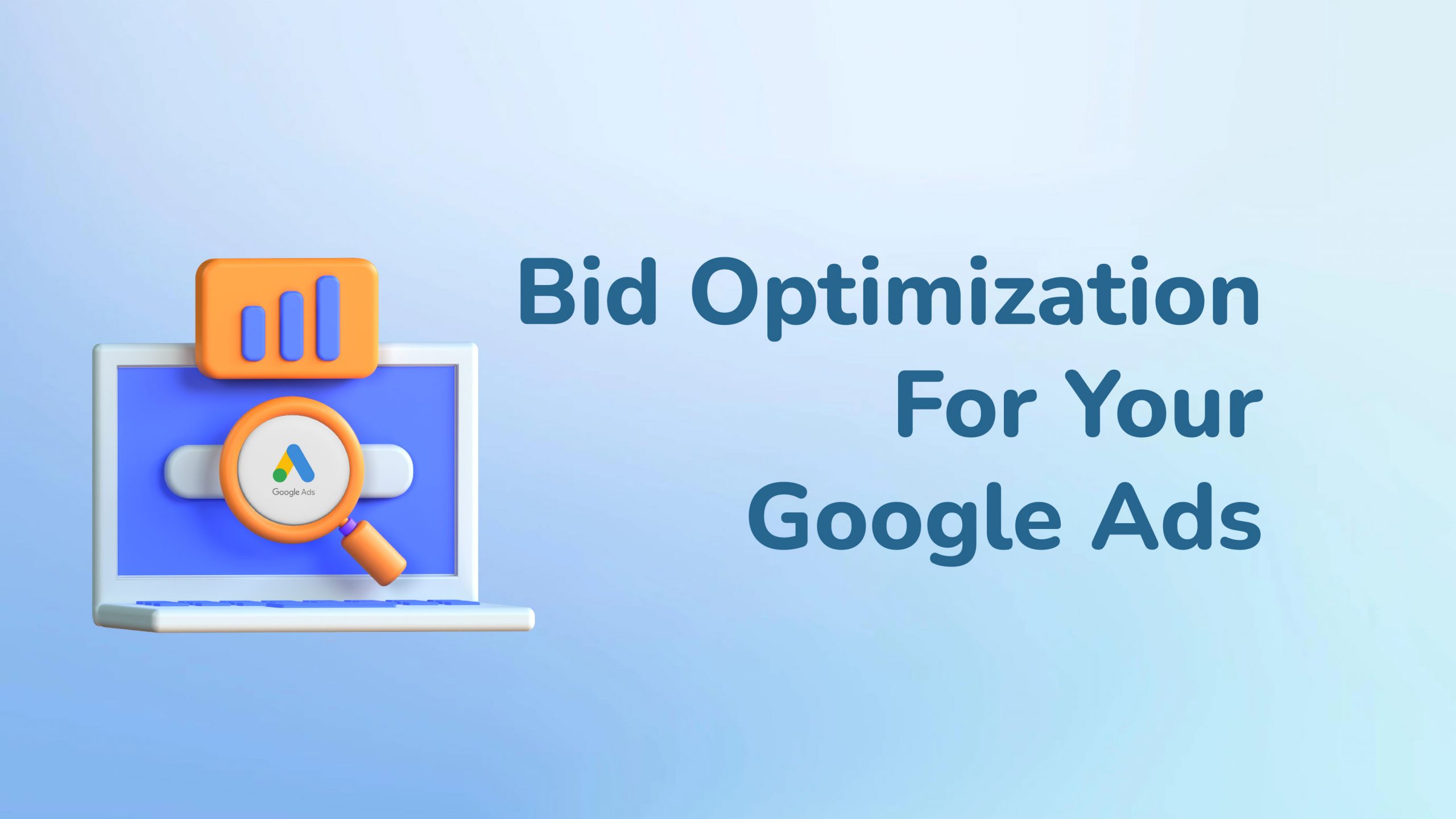
- Why Optimize Your Bids?
- How to Set Bids?
- Determine Your Budget Then Make a Plan
- Bidding Types
- Optimization For Your Bidding
- Automated Bidding Techniques to Examine
- In summary
While it can take a lot of time and effort, bid optimization is a crucial step in the process of improving a Google Ads account. It might be difficult to know where to start when it comes to tracking performance and using data analysis to control your bids in Google Ads, formerly known as AdWords.
Online product promotion involves extensive preparation and work. After all, the location of the ad online has a significant impact on the likelihood that your product will be purchased online. The position of the ad is further decided by a number of variables, including the keyword, bid optimization, relevancy, etc. In addition, you can have a look at Top Facebook Ads Bidding Strategies if you’re interested in Facebook ads strategies.
So, let’s get down to details on why you should focus on bid optimization, how to create them and all about bidding types and strategies.
Why Optimize Your Bids?
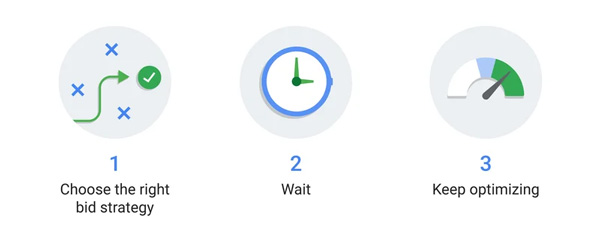
A bid is the highest price an advertiser is willing to provide in an auction where they compete to have their ads seen by potential customers. Online advertisers have a place in the realm of digital marketing where they can essentially bid or pay a particular amount of money in exchange for their ads to be displayed online.
Your ads will be shown in whatever order is determined by the amount of bidding as well as a number of other variables. You must make your bids effectively if you want to guarantee that your ad ranks better in the search result. A competitive bid price will only increase the number of clicks you receive.
There are several methods available nowadays for setting the right bid for your ads to get them more exposure online.
How to Set Bids?
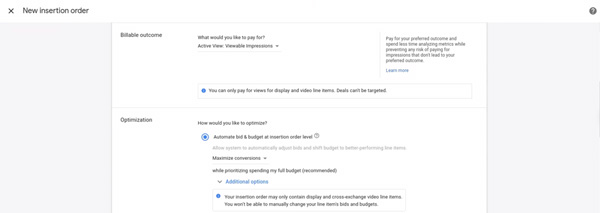
Setting bids is crucial since it influences where your ad will appear. It’s crucial to know how to build bids because you don’t want to end up overpaying. When making your first bids, there are a few things to keep in mind.
The amount of times your ad can be clicked on within a given day or month depends on your budget.
The keyword bid is the highest price you are ready to spend. It’s possible that the real price is lower than this.
Always revisit your bids after watching and evaluating the outcomes of your ads. This is due to the fact that bids are dynamic in nature and constantly alter.
Now, when making bids, there are two fundamental considerations that must be made. Both first-timers and those who have previously created bids can find these tips useful.
Determine Your Budget Then Make a Plan
The most crucial factor in determining your PPC strategy and bidding optimization is your budget. Make sure you can fit the bid amount into your budget before you start bidding. If you’re just getting started, you might take into account the formula:
Your desired clicks daily x the typical cost per click.
You may quickly calculate your average spend and the desired amount of clicks using this formula. Once you’ve finished setting up a budget, it will be simple to distinguish between the keywords, ads, etc. that are effective and those that are not. By doing so, you can either edit or edit the ads.
Always attempt to keep the ROI in mind while creating a budget. You can certainly raise your budget by a tiny amount if you believe that bringing in more traffic will yield a high return. In truth, Google Ads assists in informing sellers as to whether or not their budget is limiting the creation of extra traffic.
Bidding Types
Making a budget is the first step in setting up your bid management settings. You should then concentrate on setting the bids. You can set one of two different sorts of bids.
Manual Bidding: What Is It?
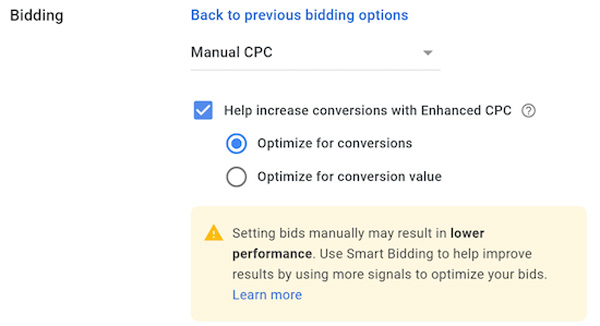
Without the use of AI or intelligent solutions, manual bidding is conducted. Advertisers place their bids based on their own analysis, experience, and the performance of the various criteria. Advertisers must cooperate more closely with the bidding system during this procedure, which also calls for more endurance and time. To have a strong ROI, manual bidding advertisers must have solid PPC expertise.
Advertisers can still choose manual bidding only if:
- You have a limited budget.
- A little amount of user data, less than 30 days’ worth, is being used.
- You want to be able to make quick changes anytime you can to your campaigns, preferences, and ads.
- You have plenty of time and resources to complete it.
The Advantages Of Manual Bidding
- You’re in complete control: By manually bidding, you may easily bid on particular terms to increase traffic to your ads.
- Fast responses: With manual bidding, you may quickly identify any new competitors or a decline in your performance and take appropriate action. You’ll respond quickly to any situation, which will have a smaller financial impact.
- No action delays: With manual bidding, all activities will be completed without delay. The implementation of automatic bidding can take some time.
Automated Bidding: What Is It?
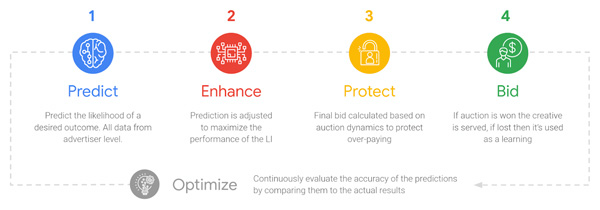
As the name implies, automated bidding uses a keyword bidding process that is directed by AI. The use of algorithms to utilize bid optimization in accordance with your PPC objectives gives this sort of bidding its name: smart bidding.
Advertisers have the option to choose automated bidding if:
- You have a lot of PPC accounts.
- You want to deal with a lot of data while simultaneously saving time and energy.
- You lack the skills necessary for manual bidding.
- You must achieve your specified objectives. Investment is also necessary for automated bidding, so only use it if you have that type of budget.
The Advantages Of Automated Bidding
- More segmentation options and adjustments based on your interests are available. You can design unique and tailored ads campaigns.
- Efficiency and time savings: By automating processes, you may actually use AI to complete all of your work and concentrate on more crucial ad campaign elements, including growth strategy.
- Accurate and exact forecasts can be made using automated bidding, which will help you make wise judgments.
- Signals and user characteristics: Some of the user attributes offered by smart bidding are beneficial for ad campaigns.
Among them are:
- User demographics like age, gender, language, operating system, and location.
- Ad performance and ad format
- The actions of users, such as how many people viewed your ads, etc.
- Other user behaviors, such as when they are viewing or what day they are, etc.
Optimization For Your Bidding
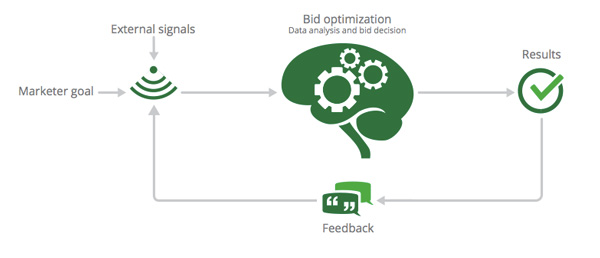
Once things start going well, it is crucial to check the state of your ads in order to perform complete optimization and bid review.
Evaluating the cost and revenue
Examining which keywords received the most clicks and impressions is one of the finest ways to gauge the effectiveness of your campaign. To check on these indicators, you might try using CTR (Click through rate). To increase sales, you can even modify the bidding based on the outcomes of these aspects.
Setting up conversion tracking for the account is one of the other options. One of the finest ways to change bids in accordance with goals is through automated bidding tactics.
Increasing ROI through bid adjustment
You might begin utilizing places, phrases, devices, etc. to obtain positive outcomes and essentially boost your ROI.
The following are some scenarios when you should begin modifying your bids:
- A low cost per click (CPC) and a high conversion rate
- Low conversion rate and a high CPC
- Limited traffic
Always make tiny adjustments to your bids. In this manner, you can always review your bids and avoid making any significant changes. Improve your ad’s quality score as much as you can. In this manner, there is no need to raise the price or charges.
Automated Bidding Techniques to Examine
Target Cost Per Acquisition
To get conversions within the CPA target, use the Target Cost Per Acquisition (tCPA). It is mainly concerned with gaining a single customer. When you don’t want to pay for clicks but yet need to produce cost-effective leads, this is an amazing tactic.
In essence, tCPA allows you to set a bid limit and Google Ads also suggests a target CPA. Even the maximum and minimum bid limits are adjustable.
Boost Conversions

Setting keyword bids to maximize conversions makes conversions more likely. You must ensure that conversion tracking is enabled for this technique to be effective; after that, Google will handle the remaining tasks. Your budget is examined by the automated bidding mechanism, which then chooses how best to use it.
Target Return on Ad Spend
In order for you to receive a higher return on your ad investment, the Target ROAS will essentially hit a specified value established in your campaign. You must also set up conversion values and enable conversion tracking here.
Share of Target Impression
This tactic aids in moving your ads up the SERP, or Search Engine Result Page, of Google. You have the option to let your ad appear anywhere on the SERP or at the very top of the page when employing the target impression technique. Google will establish your CPC bid limit in accordance with that to inform you of the placement of your ads.
Increasing clicks
Using the maximize clicks technique can help you acquire the most clicks for your PPC. The automation will determine the bids based on how much it costs to click on the ad. To better optimize the various settings, it will also take into account factors like demographics, location, day, and time.
In summary
As an advertiser, testing and experimenting with various techniques to attain the best results becomes one of your main priorities for bid optimization. CPC, keywords, and conversions are a few of the crucial considerations for advertisers to always have in mind. Depending on your efforts, time, and resources, you can always experiment with manual or automated bidding.
Based on these strategies, you can easily discover new bid optimization strategies and tips that are right for your ads and ad campaigns with WASK. By automatically recognizing every factor, including ad placements, demographic data, target audience, geography, ad strategy, conversions, and expenses, it enables you to reach a more precise target audience.
Utilize WASK’s smart features to automatically improve your underperforming ads to increase your clicks, conversions, and much more!

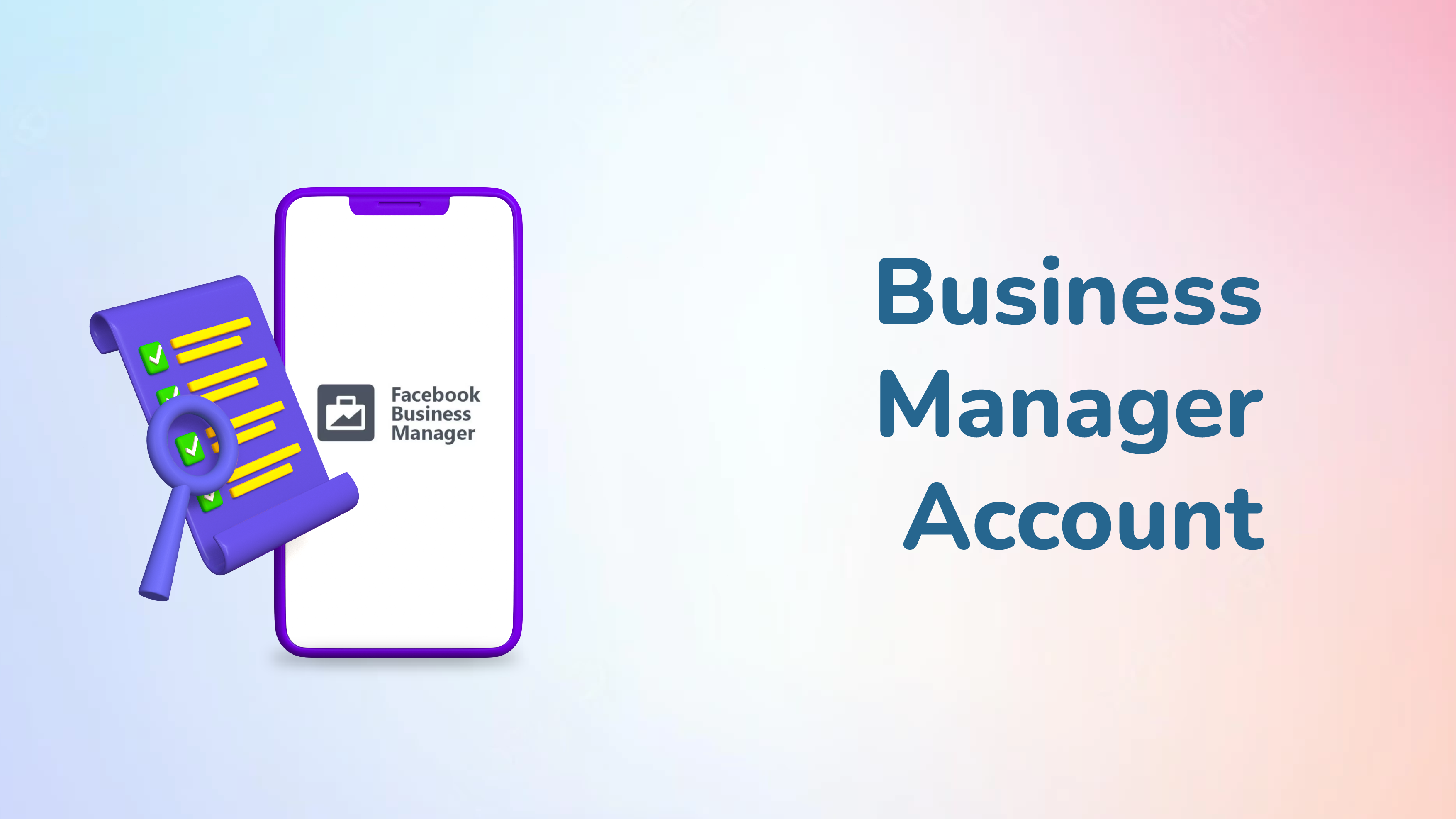


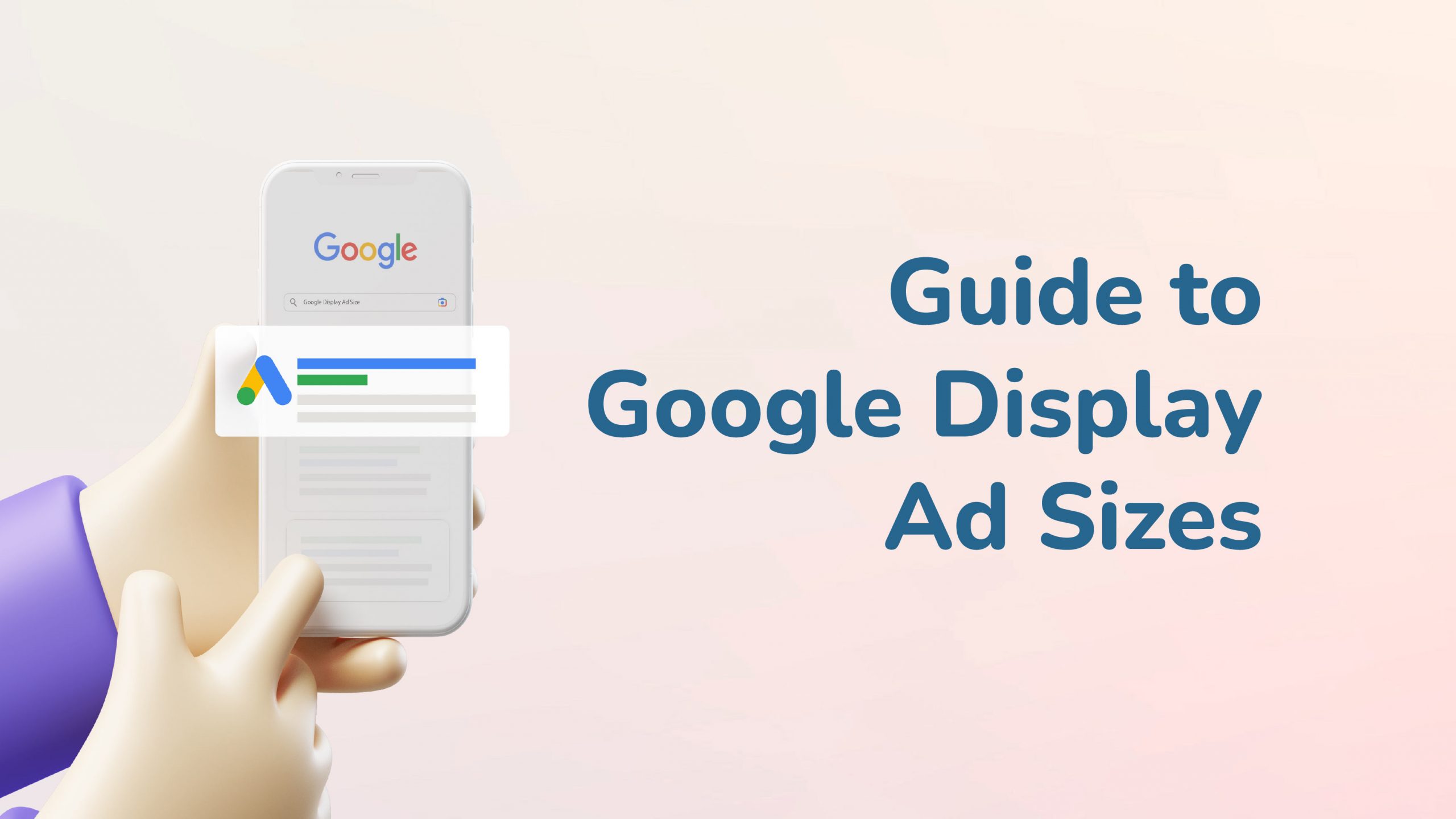
Im grateful for the article. Cool.
Thanks for your kindness Bernardo.